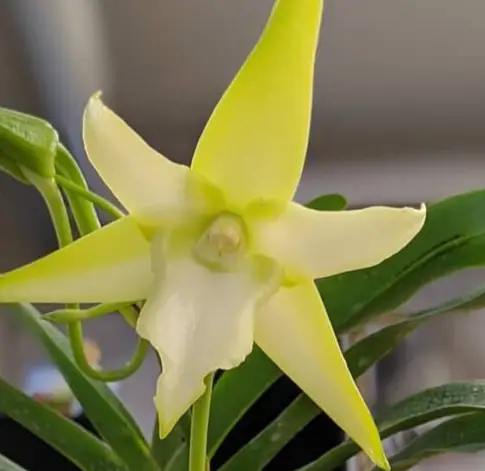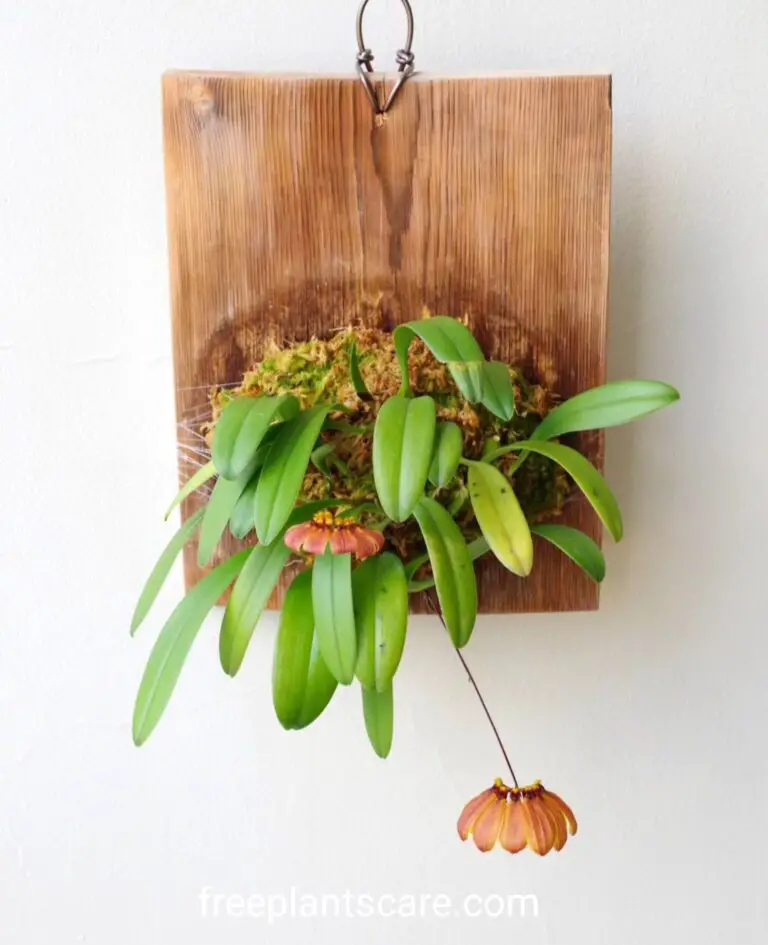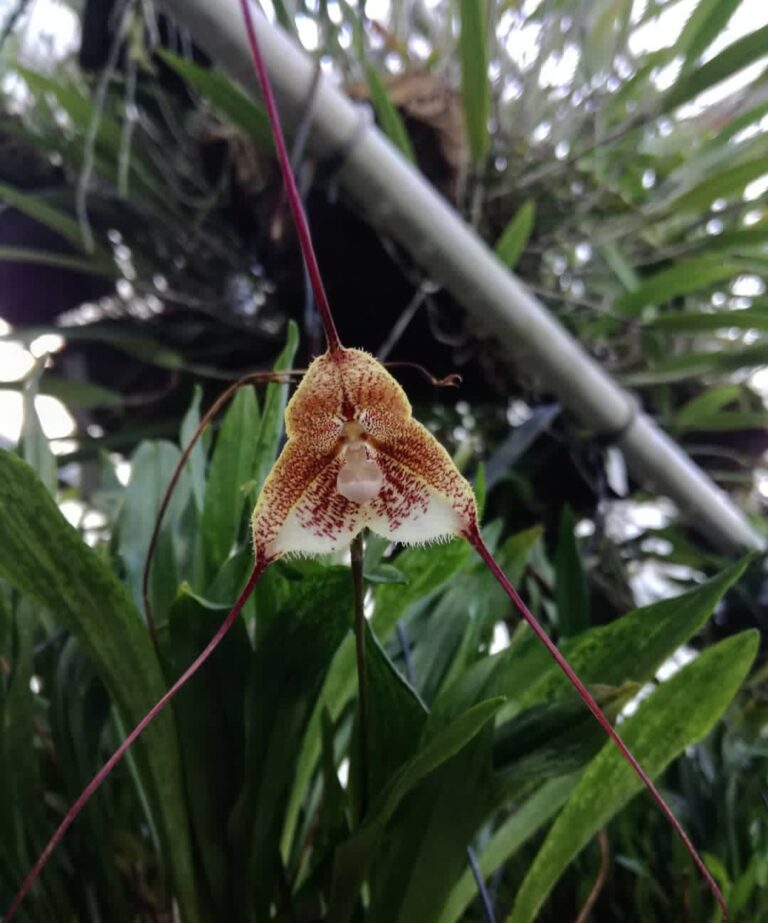Orchids are some of the most stunning and delicate plants to grow, but they can be particularly sensitive to the environment in which they’re placed. One common issue that can significantly harm your orchid’s health is salt buildup in orchids. This occurs when excess salts from fertilizers or water accumulate in the soil or potting medium, which can damage the roots and inhibit the plant’s ability to absorb water and nutrients.
If left unchecked, salt buildup can lead to yellowing leaves, browning tips, and even the eventual death of your orchid. Whether you’re a seasoned orchid grower or a beginner, understanding how salt buildup affects your plants and how to fix it is crucial for keeping your orchids thriving. In this article, we’ll explore five powerful fixes that will help you save your dying orchid and restore it to its full glory.

- 1 How to Know If Salt Buildup is the Cause of Your Orchid’s Decline
- 2 White Crust or Deposits on the Potting Medium
- 3 Yellowing or Browning Leaf Tips
- 4 Wilting or Shriveled Roots
- 5 Stunted Growth or Reduced Flowering
- 6 Leaf Yellowing or Burn
- 7 Dried-Out or Crumbly Potting Media
- 8 What Is Salt Buildup in Orchids?
- 9 Signs of Salt Buildup:
- 10 Flush the Pot Thoroughly with Distilled Water
- 11 Repot with Fresh Orchid Mix
- 12 Switch to Rainwater or RO (Reverse Osmosis) Water
- 13 Reduce Fertilizer Frequency and Strength
- 14 Add a Layer of Activated Charcoal
- 15 Final Thoughts: Don’t Let Salt Steal Your Orchid’s Beauty
- 16 FAQs on Salt Buildup in Orchids
How to Know If Salt Buildup is the Cause of Your Orchid’s Decline
Knowing if your orchid is dying due to salt buildup can sometimes be tricky, as the symptoms often overlap with other common orchid problems. However, salt buildup has specific signs that can help you identify it. Here are key indicators that your orchid may be suffering from salt buildup:
White Crust or Deposits on the Potting Medium
One of the most telltale signs of salt buildup is the appearance of white crusty deposits on the surface of the potting mix, around the edges of the pot, or even on the roots themselves. This crust is usually formed by excess minerals in the water or fertilizers that have evaporated, leaving salts behind.
Yellowing or Browning Leaf Tips
If the tips of your orchid’s leaves are turning yellow or brown, it could be a sign of salt stress. The salts interfere with the plant’s ability to take up water, causing dehydration and nutrient deficiencies. This leads to leaf tip burn, which is common when excess salts are present in the root zone.
Wilting or Shriveled Roots
Excess salts can damage the roots of your orchid, causing them to become shriveled, weak, or even mushy. Healthy orchid roots should be firm and white or green, but salt buildup can cause them to dry out and lose their ability to absorb water properly, leading to wilting and poor plant growth.
Stunted Growth or Reduced Flowering
If your orchid is not growing as vigorously as it should or if it is producing fewer flowers than usual, salt buildup may be the issue. The salts in the soil can hinder the plant’s nutrient absorption, resulting in weak growth and fewer blooms.
Leaf Yellowing or Burn
Excessive salts can cause nutrient imbalances, particularly with nitrogen and potassium. This can lead to general yellowing of the leaves or localized burn spots. Salt accumulation reduces the orchid’s ability to take up nutrients, making it more susceptible to nutrient deficiencies.
Dried-Out or Crumbly Potting Media
Salt buildup often causes the potting medium to become hard and compacted over time. This limits the airflow and drainage around the roots, making it difficult for the orchid to absorb moisture properly. If your potting mix feels dry and crumbly despite watering, it’s a sign that salts are hindering water absorption.
What Is Salt Buildup in Orchids?
Salt buildup occurs when excess minerals from tap water or fertilizers accumulate in the potting media over time. These salts can dry out the roots, block nutrient absorption, and eventually lead to plant decline or death. Orchids are particularly sensitive to this accumulation, as their roots require a well-drained and non-toxic environment to thrive. When these salts build up, they affect the root system, which then impacts the plant’s overall health.
Signs of Salt Buildup:
White crusty deposits on bark, pot edges, or roots
Yellow or browning leaf tips
Wilting or shriveled roots
Stunted growth or weak flowering
Recognizing these signs early can help prevent further damage and give your orchid a better chance of recovery.
Flush the Pot Thoroughly with Distilled Water
Flush the potting media to get rid of salt accumulation as quickly as possible. The minerals are diluted and removed throughout this procedure, restoring the health of your orchid. Start by placing the orchid over the sink or a tub, and slowly pour distilled or rainwater through the pot until water drains freely from the bottom. Repeat this process 2–3 times to ensure all excess salts are flushed out. This simple technique can be highly effective for reducing the salt content in the medium, especially when combined with other care steps.
Why it works: Flushing dilutes and removes mineral residues without harming the roots. It’s a gentle, non-invasive method to ensure that your orchid’s environment stays healthy and free of harmful salt buildup.
Salt Buildup in Orchids: Weekly Care Timetable
| Day | Task |
|---|---|
| Monday | Check potting media moisture level; avoid over-fertilizing |
| Tuesday | Mist orchid leaves lightly if humidity is low (avoid crown rot) |
| Wednesday | Water with clean, distilled or rainwater (if needed) |
| Thursday | Check leaf tips for signs of salt burn (brown/crispy edges) |
| Friday | Lightly flush the pot with clean water (monthly flush recommended) |
| Saturday | Wipe leaves with damp cloth to remove dust and any salt residue |
| Sunday | Rest day – Observe overall plant health and adjust care if needed |
Monthly Tasks
- 1st Week: Deep flush the potting media with plenty of distilled/rainwater
- 2nd Week: Inspect roots and repot if media is breaking down
- 3rd Week: Use a weak fertilizer solution (1/4 strength) only if needed
- 4th Week: Let the orchid rest — plain water only
Repot with Fresh Orchid Mix
If your orchid hasn’t been repotted in over a year, salt buildup might be deeply embedded in the potting medium. Repotting your orchid into fresh, clean mix can eliminate the problem and rejuvenate your plant. Gently remove the orchid from its pot, carefully shake off the old media, and trim away any dead, mushy, or discolored roots. Once the orchid is free of old material, replant it in a fresh orchid mix suited to its needs, such as a bark-based medium or sphagnum moss. Fresh media will provide the orchid with a healthier foundation for growth.
Bonus Tip: Avoid using reused bark or potting media, as it may contain residual salts from previous use. Using new, high-quality potting mix ensures that your orchid has a clean slate to thrive in.
Switch to Rainwater or RO (Reverse Osmosis) Water
Tap water is one of the primary sources of mineral buildup, as it often contains high levels of calcium, magnesium, and other salts. These minerals can accumulate over time and harm your orchid’s roots. To reduce this, switch to rainwater, distilled water, or reverse osmosis (RO) water for watering your orchid. These types of water contain fewer dissolved minerals and are much gentler on sensitive plants. By switching your watering routine to pure water, you’re ensuring that your orchid doesn’t absorb unwanted minerals that could lead to salt damage.
Using rainwater or RO water also has the added benefit of providing your orchid with more consistent moisture, which is essential for root health. For optimal results, avoid watering with untreated tap water, especially if it has high mineral content.
Reduce Fertilizer Frequency and Strength
Over-fertilizing your orchid can significantly contribute to salt buildup in the potting medium. When you apply fertilizer too frequently or at too high a concentration, the excess minerals and salts accumulate in the soil, causing damage to the roots. To prevent this, use the “weekly, weakly” method—apply fertilizer once a week using ¼ to ½ the recommended strength.
This method ensures that your orchid gets the nutrients it needs without overloading the medium with excessive salts. Additionally, once a month, consider skipping the fertilizer entirely and flushing the pot with plain water to clear out any accumulated salts.
Fertilizing with the correct amount of nutrients also prevents unnecessary strain on your orchid’s root system, allowing it to grow strong and healthy without the risk of salt toxicity. The key is moderation, so keep your fertilization routine light and consistent.
Add a Layer of Activated Charcoal
Activated charcoal is a powerful tool in the fight against salt buildup. It works by absorbing excess salts, impurities, and toxins in the potting medium, helping to maintain a cleaner and healthier environment for your orchid’s roots.
During repotting, add a small amount of activated horticultural charcoal into the potting mix to filter out potential toxins and salts. You can also sprinkle a thin layer of charcoal at the bottom of the pot to act as a natural filter, preventing the accumulation of salts that could harm your plant. Charcoal also helps in reducing odor and bacteria, making it a versatile addition to your orchid care routine.
Activated charcoal is a simple yet effective solution that helps keep your orchid’s growing medium fresh, ensuring that it stays free from harmful salts and other impurities. It’s a small investment that can make a big difference in the long-term health of your plant.
Final Thoughts: Don’t Let Salt Steal Your Orchid’s Beauty
Salt buildup may sound like a minor issue, but it can quietly sabotage even the healthiest orchids over time. By following these five powerful fixes, you can quickly address the problem and restore your orchid to its full potential. Remember, your orchid’s health is directly tied to the care you provide—taking steps to reduce salt buildup will help keep your plant thriving for years to come.
Quick Recap:
Flush the pot regularly with distilled water
Repot annually using fresh media
Use low-mineral water like rain or RO
Fertilize lightly and carefully
Incorporate activated charcoal for extra protection
Your orchid deserves the best care, so don’t wait until the damage is irreversible. Show your plant some love today, and you’ll be rewarded with vibrant blooms tomorrow.
FAQs on Salt Buildup in Orchids
What is salt buildup in orchids?
Salt buildup in orchids occurs when excess fertilizer and minerals accumulate in the growing medium, affecting root health and plant growth.
How can I tell if my orchid is suffering from salt buildup in orchids?
Signs of salt buildup in orchids include yellowing leaves, dry leaf tips, white crust on the potting mix, and stunted growth.
What causes salt buildup in orchids?
Salt buildup in orchids is mainly caused by over-fertilization, hard water, and poor drainage in the potting medium.
Can salt buildup in orchids kill the plant?
Yes, salt buildup in orchids can damage the roots and eventually kill the plant if not treated promptly.
How often should I flush the pot to prevent salt buildup in orchids?
Flushing the pot every 1–2 months with plain, distilled water can help prevent salt buildup in orchids.
What type of water should I use to reduce salt buildup in orchids?
Using rainwater, distilled water, or reverse osmosis water helps prevent salt buildup in orchids by minimizing mineral deposits.
Can repotting help fix salt buildup in orchids?
Yes, repotting is an effective way to address salt buildup in orchids, especially if the potting medium is heavily contaminated.
Should I stop fertilizing if I notice salt buildup in orchids?
Yes, temporarily stopping fertilization allows the orchid to recover from salt buildup in orchids and gives the roots a chance to heal.
Does salt buildup in orchids affect blooming?
Salt buildup in orchids can hinder blooming by stressing the plant and interfering with nutrient uptake.
How can I prevent salt buildup in orchids when fertilizing?
To prevent salt buildup in orchids, use diluted fertilizer and flush the pot regularly to wash away excess salts.
Can I use vinegar to treat salt buildup in orchids?
Using a very diluted vinegar solution can help in mild cases, but it’s best to use clean water to avoid harming the orchid.
Is clay potting medium better for preventing salt buildup in orchids?
Clay pots allow better air exchange and evaporation, which can help reduce salt buildup in orchids compared to plastic containers.
Can salt buildup in orchids be mistaken for other issues?
Yes, symptoms like yellow leaves or stunted growth from salt buildup in orchids can resemble nutrient deficiencies or root rot.
How long does it take to reverse salt buildup in orchids?
Depending on severity, it may take a few weeks to several months for an orchid to fully recover from salt buildup in orchids.
Are some orchid types more prone to salt buildup in orchids?
Yes, orchids with fine roots like Phalaenopsis may be more sensitive to salt buildup in orchids compared to hardier types like Cattleya.






